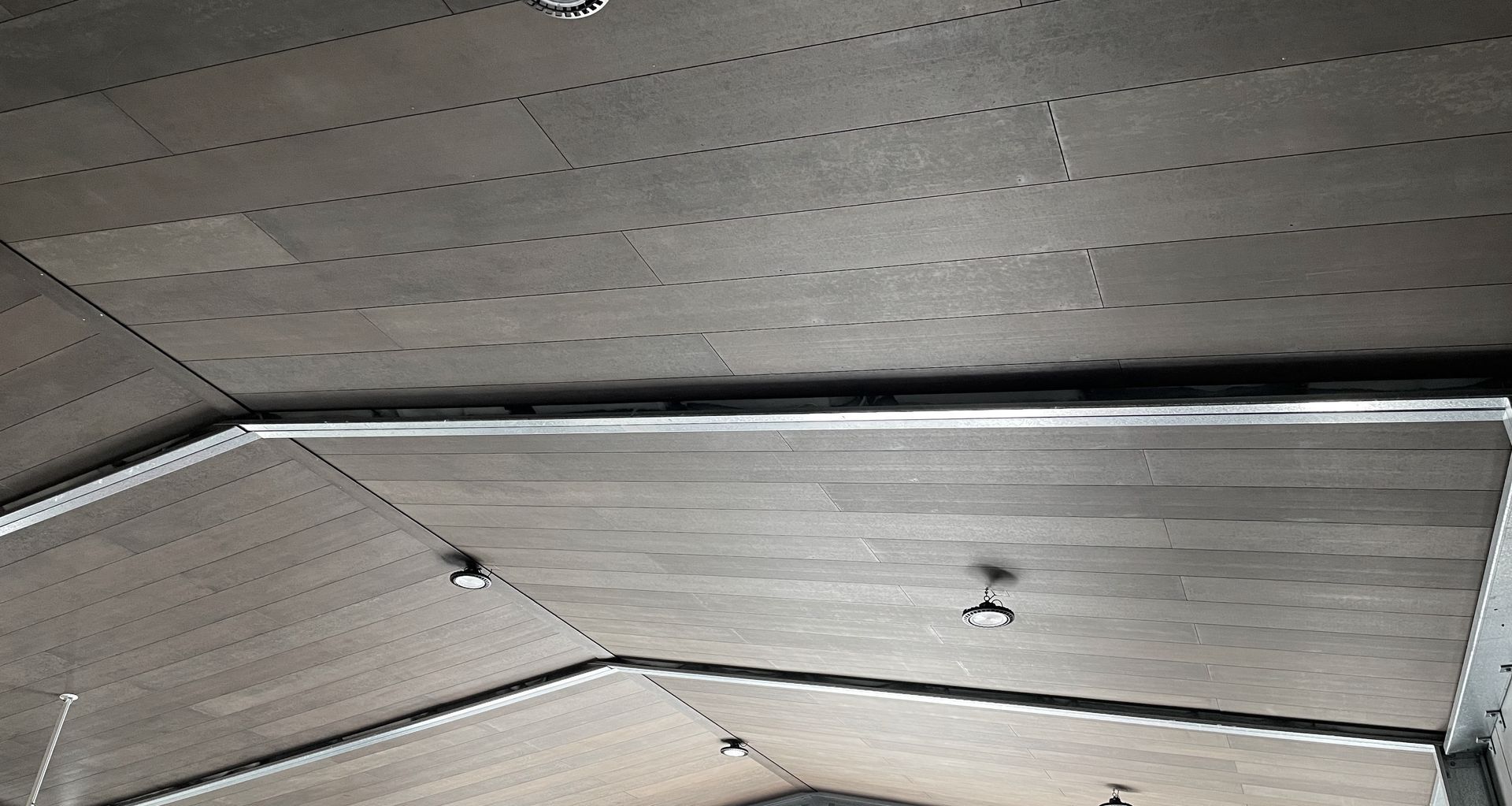The new coating changing the way architects are using TGV wall lining
Written by
09 March 2023
•
4 min read

A collaboration between Triboard tongue and groove V (TGV) wall lining supplier Juken New Zealand and Danish design importers, Design Denmark, has completely changed the way architects and specifiers are using TGV sheet wall lining in their designs.
Design Denmark imports and distributes WOCA Denmark, a range of natural plant based penetrating oils, one of which is called Diamond Oil Active. WOCA Denmark’s origins go back to the 1960’s when Ib Møller, was inspired by his ancestors’ in the use of driftwood from the many wrecks along the coastline near Skagen. First he developed furniture, and then later on treatments and WOCA oils and other products for the care and maintenance of wood.
Design Denmark was keen to experiment with the WOCA penetrating oils on Juken’s Triboard TGV sheet wall lining to see if their high quality wood oil product could elevate the look and feel of this cost-effective sheet product.
Triboard TGV is an incredibly strong and versatile wall and ceiling lining and until now, it has been most commonly used in industrial and rural applications.
But, when Design Denmark presented the samples they’d treated with their various WOCA penetrating oils to Juken NZ at a national sales meeting, Juken’s Chris Maskell says the team were blown away.
What they had always considered as a commodity sheet lining had been brought up to a high-level architectural aesthetic through the use of the stain.
"The best way I can describe it is that it looks like leather. Because the toning used in the stains is predominantly darker browns, chestnuts and earthy tones, it really gives it a high-spec, leather-panel look.”


The oil penetrates the MDF surface on the Triboard and “telegraphs” through the strand core of the product. The effect is an incredibly rich colouring that gives the Triboard a soft, leather-look surface.
Chris says, “This has opened up the doors for using the products in the WOCA toolbox to create a high-end architectural aesthetic using the Triboard TGV lining.
“The WOCA oils from Design Denmark are a great example of the look you can achieve when you get creative with applying different oil and stain products to the Triboard. We’re excited to see what other creative treatments architects and specifiers use on it, because we’ve seen just how stunning it can look with the right treatment.”
Hutton Builders was one of the first to use Diamond Oil Active in a project, when a dark matte carbon black WOCA oil was specified for a garage and bar ceiling project. The effect was so successful that they chose to use it on the ceiling of one of their own builds.
The 400mm wide panels used in their new build gives the ceiling a clean look, with straight lines directing towards the skyline. It was installed using gun-fired brads and panel adhesive, for a clean, stream-lined aesthetic.
The black ceiling compliments the neutral tones of the interior and the patterned wallpaper, anchoring it into the rural setting.


From industrial to high-end
Triboard has often been considered more suitable for a wall or ceiling lining solution for industrial spaces due to its high level strength and durability.
The strength of the product comes down to its three-layered panel with a wood strand core sandwiched between MDF outer “skins”. The dimensionally stable core gives the assurance of superior screw holding ability over other commonly used wall linings, meaning screws will not loosen over time.
“It has inherently higher impact resistance than some traditional linings and moving it into the architectural space has been a game-changer," says Chris.
“Triboard TGV is perfect for architecturally designed homes because it’s not only a cost-effective wall lining, but it can actually elevate a space through the use of oils and colours.”
Juken supplies it in two sizes: 400x2400x15mm and 400x3740x15mm, and both of these variations are light enough for a single person to handle, which makes it easy to install.
In addition, the MDF surface offers a high grade coatable finish, so whether you stain, oil or paint, you can achieve a polished look.
“It’s the perfect lining for baches, garages and workshops where high durability is required, but it’s also ideal for creating a high-end look for walls and ceilings in architecturally designed spaces. We’re excited to see how architects and designers use it next.”
See more of the latest architectural projects using TGV Triboard from Juken
